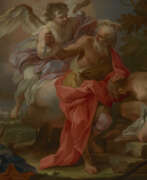Roman school

Roman school
The Roman school, also known as the Scuola Romana, was a 20th-century art movement centered in Rome, Italy. This movement, active primarily between 1928 and 1945 with a resurgence in the mid-1950s, is characterized by its association with Expressionism. The Scuola Romana comprised a group of painters who sought to express their artistic vision through this expressive and emotive style.
Artists associated with the Scuola Romana included notable figures such as Corrado Cagli, Giuseppe Capogrossi, and Emanuele Cavalli. These painters contributed to the movement with their unique styles, blending traditional artistic principles with innovative expressionist techniques. Corrado Cagli, in particular, made significant contributions, experimenting with various abstract and non-figurative techniques, and was recognized with prestigious awards like the Guggenheim prize in 1946.
The works of the Scuola Romana are marked by their intense emotionality and often feature dramatic and dynamic compositions. These artists were instrumental in defining the artistic landscape of 20th-century Italy, influencing subsequent generations of painters.
For collectors, auctioneers, and experts in art and antiques, the Scuola Romana offers a fascinating study of the evolution of Expressionism within the Italian context. The movement's distinctive approach to painting makes its artworks sought-after pieces in the world of art collection.
If you're interested in the Scuola Romana and its unique place in art history, subscribing for updates on new sales and auction events related to this movement could be highly beneficial. This subscription will provide you with the latest information and opportunities to explore and acquire notable works from this influential art movement.
| Country: | Europe, Italy |
|---|---|
| Start of the period: | 1928 |
| End of the period: | 1945 |







